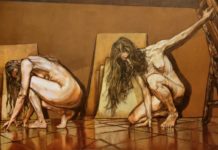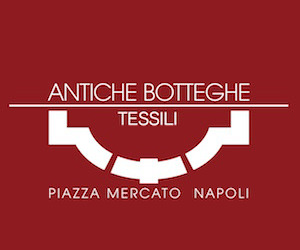“Domus. Gli arredi di Pompei”. Un nuovo percorso espositivo da ieri al Museo archeologico nazionale di Napoli nelle sale del secondo piano (foto). Curato da Massimo Osanna, Andrea Milanese e Ruggiero Ferrajoli, con la collaborazione di Luana Toniolo, il progetto invita a entrare nel cuore delle case pompeiane per riscoprirne il gusto, le abitudini e l’universo simbolico.
Bronzi, marmi, terrecotte e affreschi provenienti da diverse domus vesuviane propongono un itinerario che restituisce non solo la raffinatezza degli arredi e il valore artistico dei manufatti, ma anche l’atmosfera quotidiana e intima degli ambienti domestici. Le case degli antichi pompeiani diventano così spazi vivi, capaci di raccontare identità, aspirazioni, stili di vita.
Ogni oggetto esposto diventa frammento di una storia più ampia: quella di una società che considerava la casa non solo un luogo di rappresentazione sociale, ma anche un contenitore di oggetti di straordinaria bellezza.
Circa duecentocinquanta reperti, in gran parte provenienti dai depositi del Museo, consentono oggi di entrare, con sguardo nuovo, nelle ntiche dimore. Ogni elemento guida alla scoperta delle funzioni dell’abitare, attraverso il mobilio (sedute, sgabelli, panche, tavoli, monopodi), la ricercatezza delle suppellettili (bracieri, lucerne, scaldavivande, candelabri, tazze), e la vivacità dell’apparato decorativo (sculture, ornamenti da fontana, oscilla, affreschi). E si legge forte l’impronta lascia anche nel design moderno.
Tra i pezzi di rilievo, un grande braciere rettangolare, decorato in rame, stagno e ottone, un monumentale portalucerne impreziosito da superfici ageminate in rame e argento nonché la statua di Apollo, raffigurato nell’atto di suonare la cetra, ispirata – come spesso accade nella statuaria romana – a modelli greci.
Trovano, infine, nuova valorizzazione nelle sale appena riallestite anche le grandi pareti affrescate della villa di Numerio Popidio Floro a Boscoreale, restaurate per migliorarne la leggibilità e restituirne appieno il valore artistico.
Il percorso si apre con uno spazio immersivo ispirato alla casa del Fauno, che consente di esplorare, grazie alle nuove tecnologie, l’organizzazione architettonica e funzionale di una domus pompeiana. Un’introduzione evocativa che accompagna il visitatore alla comprensione degli ambienti domestici antichi e delle loro funzioni.
Sono già in corso i lavori per il riallestimento delle sale della Villa dei Papiri ed è stata presentata anche la nuova illuminazione delle sale dedicate agli affreschi di Pompei: realizzata in collaborazione con ERCO, valorizza al meglio questi straordinari capolavori della pittura antica.

Archaeological Museum of Naples/ “Domus. The furnishings of Pompeii”: how the public enters the ancient world between identities and lifestyles
“Domus. The furnishings of Pompeii”. A new exhibition itinerary opened yesterday at the National Archaeological Museum of Naples in the rooms on the second floor. Curated by Massimo Osanna, Andrea Milanese and Ruggiero Ferrajoli, with the collaboration of Luana Toniolo, the project invites you to enter the heart of Pompeian houses to rediscover their taste, habits and symbolic universe.
Bronzes, marbles, terracottas and frescoes from various Vesuvian domus offer an itinerary that restores not only the refinement of the furnishings and the artistic value of the artefacts, but also the daily and intimate atmosphere of domestic environments. The homes of ancient Pompeians thus become living spaces, capable of recounting identities, aspirations, lifestyles.
Each object on display becomes a fragment of a broader story: that of a society that considered the home not only a place of social representation, but also a container of objects of extraordinary beauty.
Around two hundred and fifty exhibits, mostly from the Museum’s storage rooms, now allow us to enter, with a new look, into ancient dwellings. Each element leads to the discovery of the functions of living, through the furniture (seats, stools, benches, tables, monopods), the refinement of the furnishings (braziers, lamps, food warmers, candelabras, cups), and the liveliness of the decorative apparatus (sculptures, fountain ornaments, oscilla, frescoes). And the imprint is clearly visible even in modern design.
Among the notable pieces, a large rectangular brazier, decorated in copper, tin and brass, a monumental lamp holder embellished with surfaces inlaid in copper and silver as well as the statue of Apollo, depicted in the act of playing the lyre, inspired – as often happens in Roman statuary – by Greek models.
Finally, the large frescoed walls of the villa of Numerius Popidio Florus in Boscoreale have also been given new value in the newly redesigned rooms, restored to improve their readability and fully restore their artistic value.
The itinerary opens with an immersive space inspired by the House of the Faun, which allows you to explore, thanks to new technologies, the architectural and functional organization of a Pompeian domus. An evocative introduction that accompanies the visitor to understand ancient domestic environments and their functions.
Work is already underway to redesign the rooms of the Villa dei Papiri and the new lighting of the rooms dedicated to the frescoes of Pompeii has also been presented: created in collaboration with ERCO, it enhances these extraordinary masterpieces of ancient painting to the fullest.










